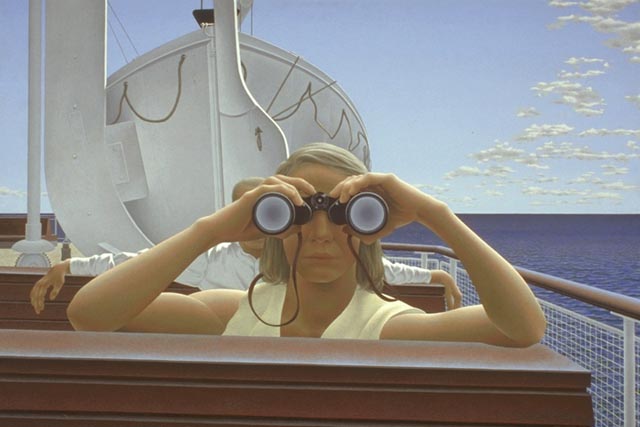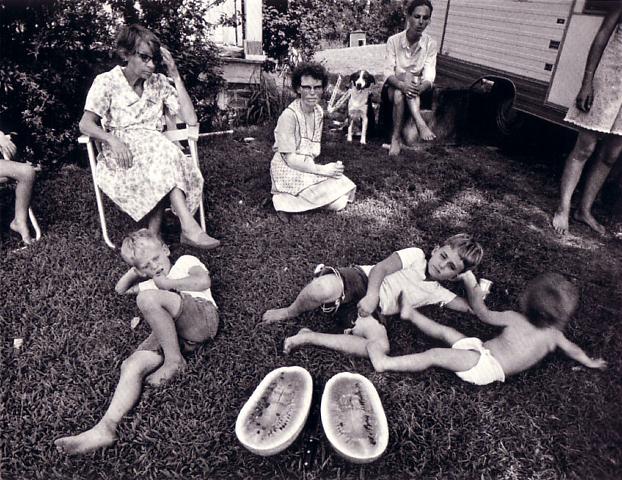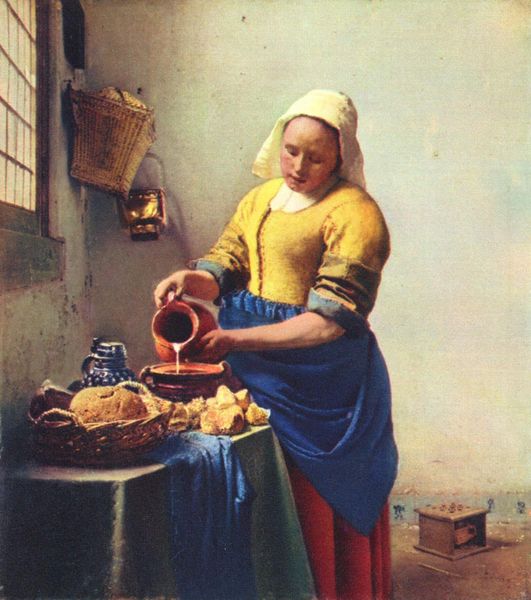The Art of Seeing Art
Version 1.1, © 2007 by Dale Cotton, all rights reserved.
Part 4: A Return to Reality
Part 3 ended with:
... we might conclude that representationalism in general, and photography in particular, are doomed to prosaic artlessness.
So let's look at an example:

Fig. 1: To Prince Edward Island by Alex Colville
This picture is certainly representational and at first blush seems photographic, but we soon see the artist has simplified or abstracted the scene by removing small details, while maintaining the precision of outlines we associate with reality. The relatively smooth areas with three-dimensional shading create a pleasingly sculptural quality (in stark contrast to the disquieting aspects of the subject matter). This may be prose, but if so it is the sinewy sort of plain-talk we associate with Homer and Hemingway.
The advantage of realism is that the artist gets to piggy-back on to the vast heritage of graphic associations that humanity has accumulated over the past 50,000 years. To Prince Edward Island starts with purely aesthetic qualities, such as sculptural massivity, but goes on to hint at unspoken significances freighted with mythic gravity. We can analyze the picture further to uncover the slight cant to the deck of the ship; the unsmiling stare of the woman with her binoculars pointed directly at us; the cataract opacity of the front elements of the binoculars that should instead quiver with our own reflections; the lifeboat looming over everything else. And what are those mahogany-hued arm rests – are they bench backs or are they caskets? But the impact of these factors arises precisely to the degree that they are non-verbal, by-passing the comfortable world of the verbal cortex and striking straight at the fight-or-flight reflexes wired into the visual cortex. They remind us that a blue sky and summer weather provide no real haven from danger. They take a cruise ship filled with vacationers and transform it into a merchant marine freighter vigilant against the wolf pack. Lyric poetry? Think Beowulf, not Browning.
But perhaps the abstraction of detail in Colville's painting is an essential ingredient in transforming the visually prosaic into art. If so, there would not seem to be much hope for photography. Let's see:
Getting people to be themselves in front of a camera rather than stiffly posing is an art all to itself. This could be a father's snapshot of his family, and for all we know this is Emmet's own family or relatives. Yet at some time or other this picture has hung framed and undoubtedly matted in egg-shell white on a gallery wall. To a fellow artist the wedding of so many rich and graceful shapes, dynamically arranged into a single scene is sheer mastery. Could the watermelon halves – Gaia's innermost ovaries – have just happened to have been laid out upon the lawn? We'll likely never know. But this is not an image that lets us wallow in mere surface values. It speaks of material poverty just barely staved off by a new set of lawn chairs. It speaks of spiritual impoverishment – the long-term deprivation of some essential vitamin of the soul not present in the local soil – not at all staved off by family festivities on a warm summer's day.
Caveat: for all that my motives may be good, still, by writing about these two pictures I am to some degree spoiling them for you. Visual art employs a visual vocabulary. To the degree that I am correct, I'm nevertheless re-channeling a visual experience into a verbal experience. To the degree that I'm wrong, I'm leading you astray. Either way, I'm giving the impression that your "job" as a viewer is to "understand" what the artist is "saying". That's just about opposite the truth. Your job is to feel as deeply as the artist does, not to think as analytically as the critic does.
Can we at least hold this picture up as evidence that poetry can be achieved without abstraction? Unfortunately, no. The single most obvious fact about it is that colour has been abstracted down to black, to white, and to shades of grey.
Is it possible to have lyrical art in full colour and without abstraction? That's not clear, so let's ask Vermeer:
* * *
... And that brings us to the end of our Art Appreciation 101 course of study. Stay tuned to this same channel next week for Part 5 in which we'll start in on the 102 material by scrounging around in the artist's toolbox and see what we can find. If instead you don't wish to stay with us for 102, you may still want to check back for the final class which will be a report on the business of art or The Frolic of the Egos.

